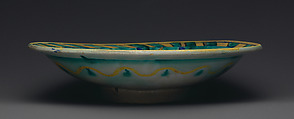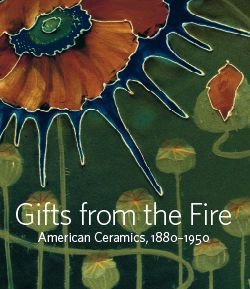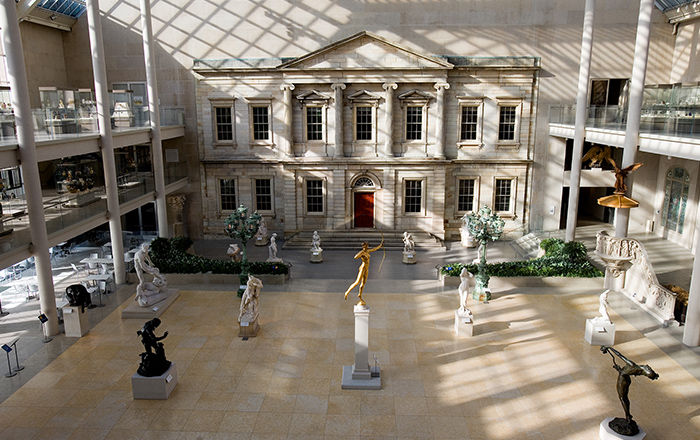Plaque with horses
Wilhelm Hunt Diederich American, born Hungary
Wilhelm Hunt Diederich was a Hungarian-born artist, whose American mother was the daughter of famed architect William Morris Hunt. He studied painting and sculpture both in the United States and abroad. Like many of his era, he embraced several media, most notably paper cutouts and metalwork. By 1916 he was also working in clay. Diederich particular favored chargers or large plates like this one that served as blank canvases for his energetic designs. They can be most characterized as highly charged silhouetted forms, in this case two horses, which echo his interest in a folk tradition of intricately cut paper popular in Austria and Switzerland. Typical of his designs in all media are the thin elegantly elongated bodies of the animals, which appear as highly expressive, almost whimsical forms. Diederich explored different traditions in clay, including a sgrafitto technique exposing the red earthenware clay with which he worked, visible here on the horse’s manes and that of sixteenth-century Italian majolica, which utilized colored oxides on a lighter ground, such as on this plaque. The unconventional palette of the eye-catching blue and yellow horses suggests Diederich’s admiration of Fauvist painting.
This image cannot be enlarged, viewed at full screen, or downloaded.
This artwork is meant to be viewed from right to left. Scroll left to view more.




